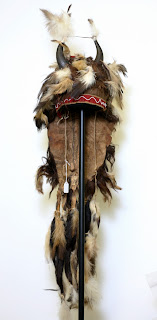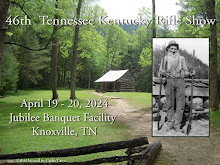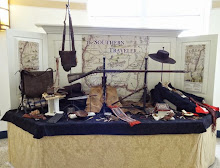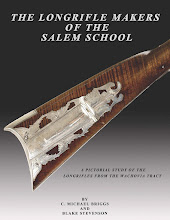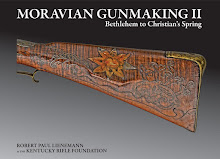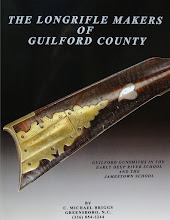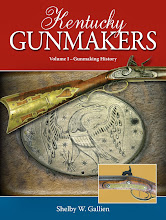Sunday, March 31, 2013
Treasures of the Plains: Paul Dyck Collection
Items from the Paul Dyck collection at the Plains Indian Museum at the Buffalo Bill Historical Center in Cody
Dyck’s focus through decades of acquisitions was the buffalo days between the late 1700s and mid-1800s.
evidence of the transition and the influence of Euro-Americans on the Plains tribes can been seen in the Dyck collection. Early pieces were fashioned with natural dyes, trade beads and porcupine quills. Designs were mostly geometric. Commercial dyes and a proliferation of beads and color were identified with later items. Floral designs also began to appear. Clothing had a more European cut.
Much of the Plains Indian material in collections across the nation, including Dyck’s, came from Lakota Sioux, in part because they were the largest group on the Northern Plains, the curator said. Crow and Cheyenne items were also well-represented.
Women's Ceremonial Headdress from the Blackfeet Tribe
A Crow Shield Featuring Eagle Feathers and a Painted Bear Claw
A Boy's Shirt Decorated with Porcupine Quillwork from the Hidatsa Tribe
A Northern Plains Painted Buffalo Robe
A Beaded Cheyenne Tepee Bag
Horse Hair Tassels Decorate a Beaded Hide Tepee Bag
A Bison Rawhide Parfleche
Engraved Decoration on a Bison Rawhide Parfleche
A Decorative Horse Mask
A Decorative Horse Mask
Quill Weaving Detail on a Hide Shirt
Details of a Beaded Elk-Tooth Dress
A Beaded Detail of a Hide Coat
Saturday, March 30, 2013
J.R. Salvo Rifle
A J.R. Salvo rifle built in the 1969. Very interesting piece with South Carolina influence. 48 inch tapered barrel and some of the furniture is copper.
The cheek-piece carving on the Salvo rifle is of wild rice.
Copy and images from American Longrifles Forum.
6th Annual Southern Arms and Crafts Show: Photos
Tim Hodges Display
Clay Smith Display
Ed Rayl Display
"Tools of the Trade" Display by Jim Melchor
Wayne Watson
Allan Sandy Display
Copy and photos supplied by Dennis Glazener.
Cowan's Auction Items
This Cowan's auction is the first portion of the Marvin L. Lince Collection. The second portion will be auctioned in September 2013.
This Central Plains Bear Claw Necklace is composed of 29 honey-colored grizzly bear claws connected at the knuckle by hide thongs to otter fur and are strung through the mid-nail by a "bridle" string of sinew; red and beige trade cloth wraps otter fur and separates claws; long thin fringe dotted with quillwork falls at neckline behind necklace, length 17 in.; length of claw 4 in. 19th centuryBear claw necklaces are symbols both to outsiders and to clansmen that the wearer is a proven warrior, one to be revered and respected. As a Grizzly is in nature, the owner has demonstrated great strength, power, and leadership. In this select role, he also has the ability to harness the spirit of the bear.
This Iroquois Figural Ball Club is formed with a flattened handle gently tapering to a slightly rounded grip and washed with a reddish stain; ball of club contains an iron spike with four wire nails and deep carving reminiscent of a feline face, possibly the underwater panther. The shaft is heavily decorated with engraved beings including thunderbirds, underwater panther, horned serpent,, owl, deer, bobcat, beavers, arrows, and other whimsical designs; handle pierced through for attachments, length 20 in. early 19th century.
Both the form of the club and the detailed iconography carved onto it speaks to the duality and spiritual balance of the universe. In viewing the form of the club, the ball portion which has been carved with a gently sloping nose, downward-turned mouth, and wire nails detailing whiskers is suggestive of the face of the Underwater Panther. The Underwater Panther, found throughout Algonquian-speaking groups, is considered the powerful and feared of underwater creatures (Skinner 1924: 47-48, 398). Those in the grace of the Underwater Panther can rely on success (Fox 2004: 288).
This Western Plains Pipe Tomahawk with engravings has the upper portion of handle decorated with 30 brass tacks arranged into rows; remnants of tacks along grip, handle pierced for attachment; head with oval eye and elongated bowl; rocker-engraved spider web is illustrated on one side of the forged blade; light linear engravings are on reverse, length 21 in., length of blade 5.5 in. x width of blade 3.5 in.
Spiders and spider web iconography is found throughout the Plains. Spiders are believed to protect, and have great wisdom and power (Maurer 1993: 58; Hail 1983: 87). The Blackfoot tell the story of Poia (Star Boy) where Feather Woman, wife of Morning Star and mother of Poia, disobeyed the instruction of the Moon. Spider made a web and lowered her and Poia to earth (Gray 1916: 93-96).
The decoration on the blade of this tomahawk could reference the story of Poia, depicting the spider web as half sky and half earth. The spider illustrated in the lower right corner, a feather, symbolic of Feather Woman is located at the the lower left corner, and the moon possibly in the upper left.
These Hudson Bay Kettles including one copper and one brass kettle, each with iron swing handle and stamped on inside HBC, height 5.5 in. x diameter 9.25 in. and height 5.75 in. x diameter 9.5 in.18th century.
Copy and photos from Cowan's Auctions where you can fine more images with descriptions and the references to some of the descriptions.
Labels:
Antique Native American,
Cowan's Auction
Subscribe to:
Posts (Atom)



